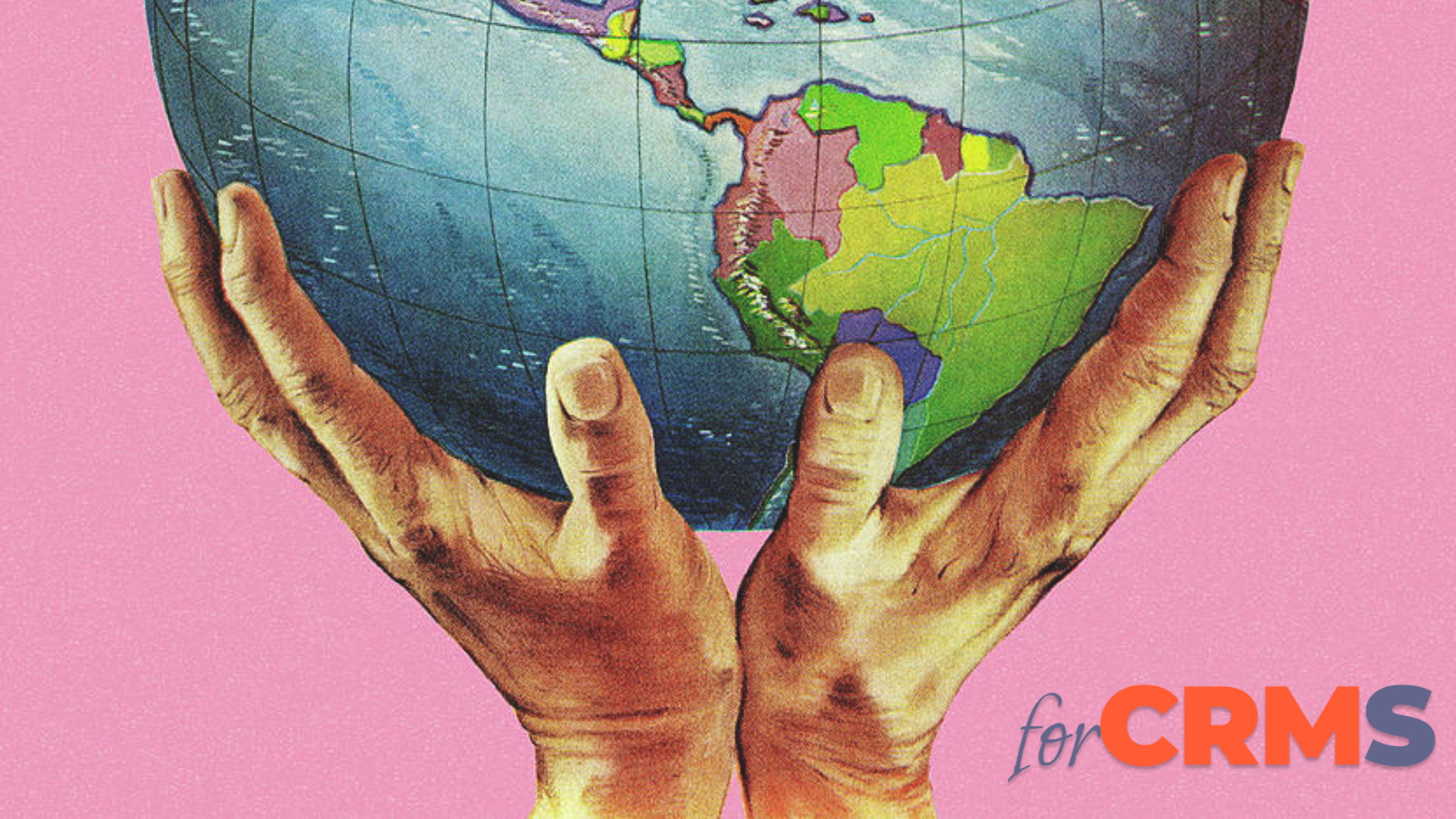'The Customer Journey Map is a compass that helps us discover new ways to reach the customer's heart, understand their needs, and provide the best experience at every stage of their journey to success.'
Hi friends, today I want to talk to you about an exciting tool that helps companies improve the customer experience and gain a deeper understanding of their needs. Let's dive into the world of Customer Journey Mapping and learn how it can impact interactions with your brand.
What is Customer Journey Mapping?
Imagine becoming a customer of your own company. From the first introduction to your product to making a purchase, and even beyond that, every step of the journey is important. Customer Journey Mapping is a method of exploring and visualizing all these stages that a customer goes through when interacting with your brand or product.
Why it's needed?
Understanding how a customer perceives your brand at each stage helps identify moments of joy, frustration or misunderstanding. This allows you to focus on improving the customer experience, addressing pain points, and creating a more harmonious interaction.
How it works?
Customer Journey Mapping research involves analyzing all touch points between a customer and your company: from online search, to website visit, to communication with support representatives, to after-sales service. This helps to identify key moments and emotional states of the customer at every stage.
Why is this important for your businesses?
By having a full understanding of how a customer interacts with your brand, you can pinpoint exactly where you need to make changes to make the customer experience even better. This can increase customer loyalty, boost sales, and improve your brand's overall reputation.
In the end, using Customer Journey Mapping isn't just a tool, it's about diving into your customer's world to create a more amazing and meaningful experience. If you're looking to improve your products or services, this could be your key to success. And remember, at the end of the day, always strive to create not just a product, but a story - a story that will stay in your customer's mind for a long time.
[Related Article: Top 15 CRM Conferences]
What is Customer Journey Mapping used for in business?
 Now let's talk about how Customer Journey Mapping finds its application in business and what benefits it brings to companies.
Now let's talk about how Customer Journey Mapping finds its application in business and what benefits it brings to companies.
1. Increased customer loyalty
Understanding each stage of the customer journey helps to identify the moments that make the customer experience more convenient and enjoyable. Improving these moments can significantly increase customer satisfaction and, as a result, customer loyalty to the brand. Loyal customers are more likely to stay with a company, make repeat purchases, and recommend it to their friends.
2. Improving User Experience (UX)
Analyzing the customer journey identifies weaknesses and inconveniences in the user experience. Addressing issues at different stages of interaction with a product or service helps improve the UX, making it more intuitive, convenient, and appealing to customers.
3. Optimize your marketing strategies
Customer Journey Mapping helps you understand how customers find your brand, what communication channels they prefer, and how they make purchasing decisions. This allows companies to optimize their marketing strategies, focus on the most effective channels, and create more accurate and personalized messages for their audience.
4. Identifying opportunities to improve the product or service
Studying the customer journey helps identify what customers value about your product or service, as well as what points they may find insufficiently satisfying. This gives companies valuable feedback to improve the product or service to better meet customer needs and expectations.
5. Improving customer interactions
Understanding how customers interact with your company allows you to create more personalized customer service strategies. This can include more accurate and timely support, customized offers, and personalized approaches to communicating with customers.
Ultimately, utilizing the customer journey in business helps companies better understand their audience, improve product and marketing strategies, and create a more satisfying customer experience. It is an essential tool for companies looking to not only attract new customers, but also retain their existing base and grow their business.
Difference between User Journey Maps
 Let's dig deeper and talk about the differences between the two main types of user journey maps: the Customer Journey Map and the User Journey Map.
Let's dig deeper and talk about the differences between the two main types of user journey maps: the Customer Journey Map and the User Journey Map.
Customer Journey Map (CJM)
The Customer Journey Map focuses on the entire experience of a customer's interaction with a company, product or service. It focuses on the customer's journey through all stages from the beginning of the interaction to completion, including all touch points: from the initial research phase to purchase, as well as post-sales service. CJM helps to understand the customer's emotional states, needs, challenges and successes at each stage of interaction with the brand.
User Journey Map (UJM)
User journey map, on the other hand, focuses on the user's experience within a particular product or service. UJM explores in detail how the user interacts with the product's interface, functionality, challenges encountered and decisions made during the process of use. It depicts the steps the user follows to achieve certain goals within the product itself.
Differences between CJM and UJM
The main difference between the two is that CJM looks at the broad context of a customer's interaction with a company, whereas UJM focuses on the specific user experience within a product. CJM includes more phases and stages, including not only the use of a specific product but also other forms of interaction with the brand, whereas UJM focuses solely on a specific user session within a product. Both types of maps are valuable tools for understanding the needs, problems and expectations of users or customers. Using both maps can provide a comprehensive view of your audience's interactions with your product and brand as a whole.
However, remember that despite their differences, using them in combination can be the most effective approach to understanding the customer experience and improving your products and services.
[Related Article: Help Desk Trends: Evolving Customer Support in the Digital Age]
Funnel and CJM - differences
Let's continue our fascinating journey into the world of marketing tools and explore the key differences between a sales funnel and a customer journey map (CJM). For those who are encountering these terms for the first time, they are exciting tools used in marketing to understand the sales process and customer experience.
Sales Funnel
Let's start with the sales funnel. This is a model that depicts the journey a potential customer takes from initial contact with a product or service to finalizing a purchase. The sales funnel includes stages such as product familiarization, interest, decision and actual purchase. It is often used to analyze the effectiveness of marketing campaigns and identify problem areas in the sales process.
Customer Journey Map (CJM)
Now let's move on to the customer journey map. The CJM, as mentioned earlier, is a visual representation of the entire customer journey from the beginning to the end of an interaction with a product or service. It takes into account every stage a customer goes through: from first contact with a brand to purchase, product usage and follow-up support. One of the key aspects of CJM is to take into account the customer's emotional states, needs and expectations at each stage of the interaction.
Differences between a sales funnel and CJM
The main difference between these tools is their focus and scope. The sales funnel focuses on the sales process and customer conversion from leads to customers. It focuses on measuring the effectiveness of marketing and sales efforts to determine where problems or congestion occur in the buying process.
CJM, on the other hand, covers a broader range of customer interactions with a brand or product. It not only analyzes the stages of purchase, but also considers all phases of the customer's experience, including communication with support, product usage, and even follow-up interactions.
Algorithm of creating a customer journey map
 Let's walk through this process together!
Let's walk through this process together!
Step 1: Define goals and objectives
First of all, define the goals of creating a customer journey map. What exactly do you want to accomplish? Improve the customer experience? Identify bottlenecks in customer interactions? Improve customer satisfaction? This will help you focus on key aspects in your research.
Step 2: Audience Research
Identify your target audience and research their behaviors, needs, and preferences. This may involve collecting data from a variety of sources: customer surveys, website analytics, feedback, interviews, and other research methods.
Step 3: Identify the stages of engagement
Divide the customer journey into key stages. These could be initial product awareness, making a purchase decision, making a purchase, using the product and after-sales service. Consider all possible touchpoints and emotional states of customers at each stage.
Step 4: Create a customer journey map
Gather all the information about each stage of the customer journey and visualize it on a customer journey map. This can be a diagram, chart or graphic that represents the steps, actions and emotions of the customer at different stages of interaction with your product or brand.
Step 5: Analyze and look for improvements
Once the customer journey map is created, analyze each step, identifying key points and problem areas. Identify where the customer experience can be improved, what changes can be made to make each stage more convenient and enjoyable for customers.
Step 6: Implement improvements and track results
Based on the analysis, make the necessary changes to improve the customer experience. Once the changes are implemented, track the results and measure their impact on the customer experience using metrics such as customer satisfaction, conversions, and other key metrics.
[Related Article: CRM Best Practices]
Examples of Customer Journey Map development in well-known companies
Let's take a closer look at how well-known companies like Starbucks, Apple, Airbnb, and Amazon create and utilize customer journey maps.
 Starbucks is actively using customer journey maps to learn and improve the experience of visitors to their coffee shops. They start by analyzing all stages of a customer's interaction: from the moment a customer learns about a brand (e.g., through social media, advertising, or recommendations), to visiting a coffee shop, choosing a drink, paying, receiving an order, and even following up with feedback or recommendations. They often conduct customer interviews, observe customer behavior inside coffee shops, and collect data through the Starbucks mobile app to track customer preferences and behavior. All of this data helps create a detailed customer journey map that depicts key milestones and the emotional states of customers at each stage.
Starbucks is actively using customer journey maps to learn and improve the experience of visitors to their coffee shops. They start by analyzing all stages of a customer's interaction: from the moment a customer learns about a brand (e.g., through social media, advertising, or recommendations), to visiting a coffee shop, choosing a drink, paying, receiving an order, and even following up with feedback or recommendations. They often conduct customer interviews, observe customer behavior inside coffee shops, and collect data through the Starbucks mobile app to track customer preferences and behavior. All of this data helps create a detailed customer journey map that depicts key milestones and the emotional states of customers at each stage.
 Apple studies customer interactions with products, from visiting a website or store, selecting a product, through the purchase process and device setup, to using apps and seeking help from a service center. Apple collects data through online questionnaires, tracks user behavior on its websites and mobile apps, and conducts focus groups and surveys to fully represent the customer journey and identify areas for improvement.
Apple studies customer interactions with products, from visiting a website or store, selecting a product, through the purchase process and device setup, to using apps and seeking help from a service center. Apple collects data through online questionnaires, tracks user behavior on its websites and mobile apps, and conducts focus groups and surveys to fully represent the customer journey and identify areas for improvement.
 Airbnb focuses on the process of booking accommodations when mapping the customer journey. They study how customers find and select accommodations, the booking process, interactions with the host, accommodations, and feedback left after traveling. Airbnb can use data from user reviews, search analytics, and conversations with customers through the platform to understand exactly what users value and expect at each stage of the journey.
Airbnb focuses on the process of booking accommodations when mapping the customer journey. They study how customers find and select accommodations, the booking process, interactions with the host, accommodations, and feedback left after traveling. Airbnb can use data from user reviews, search analytics, and conversations with customers through the platform to understand exactly what users value and expect at each stage of the journey.
 Amazon actively explores the customer journey from the beginning of the product search to the moment the order is received. They analyze the process of selecting and paying for an item, the speed of delivery, as well as the interaction with the support service and the return process, if applicable. Amazon uses multiple data sources, from website analytics and customer purchase history to feedback through reviews and customer conversations to map the customer journey and identify areas for service improvement.
Amazon actively explores the customer journey from the beginning of the product search to the moment the order is received. They analyze the process of selecting and paying for an item, the speed of delivery, as well as the interaction with the support service and the return process, if applicable. Amazon uses multiple data sources, from website analytics and customer purchase history to feedback through reviews and customer conversations to map the customer journey and identify areas for service improvement.
So, Customer Journey Mapping is the key to a positive user experience. The simpler, clearer, and more logical the communication between the brand and customers, the more deals you will close. Moreover, it will increase customer loyalty during subsequent contacts with them. Systematic work with customer experience makes it easier to move through the sales funnel, helps to identify problem areas and eliminate them before they become an obstacle to business.





.png)
.png)